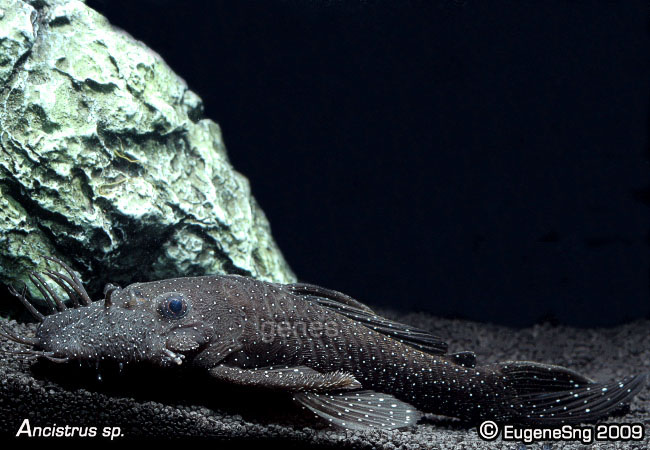
Those at C328 are not L183. If you see carefully, some of them already lost the white trims on the tail and dorsal fin. A true L183 retains the white trims even at adulthood. So they are either a L181 or L182. I'm more inclined to call it L181. More common name would be peppermint bristlenose. A L183 is know as a starlight bristlenose. Many times they are being sold as L183 because at young, they are difficult to differentiate and can pass of easily as a L183. So best way is to check for the white trims within the same batch of different sizes. If you see a batch with thick white trimmings for every single piece, then you are in luck!If you think $10 for them is expensive...i paid $30 for them a week before C328 sold them.
So if you ask me, no, $10 is not expensive for a L181.
This is a similar piece to C328 that i paid 3x more earlier. And yes, i bought more from C328 because its only $10!
This should be how it will look like once it reaches adulthood. A beautiful fish nonetheless.

Last edited by genes; 28th Sep 2009 at 19:24.
Eugene (^_^)
De Dwergcichlide Fanatiek
Now swimming: Plecos and Apistogrammas

for both location:
A) small betta tank on the betta wall/lowgrade crs/snails
B) Large tank with L046
Both he told me L235 ~_~
Last edited by celticfish; 29th Sep 2009 at 18:31. Reason: Remove immediate quote

Thanks Eugene! Yes yes simple and beautiful fish
Last edited by celticfish; 29th Sep 2009 at 18:31. Reason: Remove quote
I have acquired 2 L235 on the week before last week where L183 just arrived (last friday). Find that there are really some difference between the 2.
The plecs housed in the small betta tank on the betta wall/lowgrade crs/snails side have a higher head profile & lots of chew chew. Where L235 (Pseudolithoxus Anthrax - Flyer cat) no chew chew & flat head profile.

Many thanks! Will take note!
Last edited by celticfish; 29th Sep 2009 at 18:30. Reason: Remove immediate quote
IMG_0454edited.jpg
bought this at katib for $10, Y618 i think. its a bristle nose.




Hi Puffer,
Your Ancistrus looks a lot like LDA 08 Ancistrus claro, which rarely grows to more than 2-3/4 inches. They have broad head and wide oval shaped mouths when compared to common Ancistrus and their spot are dark tan to almost gold among the specimens I have seen or owned. If that is what they are to me that makes them special. They are easy to breed, water chemistry is not important and their small adult size makes them a very desirable Pleco.
Old fish breeder. SA Dwarf Cichlids, Hypancistrus sp L260, L333 and Peckoltia L134 breeder. Also Sturisoma, Dwarf Corydoras spp, wild Discus and Killiefish. Like breeding Characins and wild Betta spp too.





Hi Apistomaster,
There seems to be some interest lately on my ancistrus sp. No I don't think mine look like LDA08 if you look at the e-Catalogue in Planetcatfish.com. Like some other brothers had identified earlier, they look more like L309. You may refer to my earlier thread here:
http://www.aquaticquotient.com/forum...highlight=L309
As this thread is not mine, I shall refrain from posting here further. When I am able to make a few shots of my present fish, I will start a new thread and discuss with you guys on its ID and other related matters pertaining to the fish. Many thanks.
Rob
*** *** *** ***
"Natura non facit saltum"

Last edited by creech; 25th Apr 2011 at 14:33.

i suppose it is L181,
it can grow up to 6-8inch max, but takes time.
lifeisfullofemptypromisesandbrokendreams
Hypancistrus and Tanganyikan cichlids breeding
Bookmarks